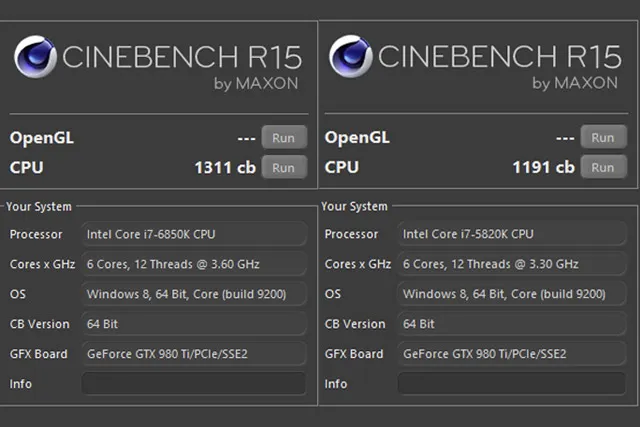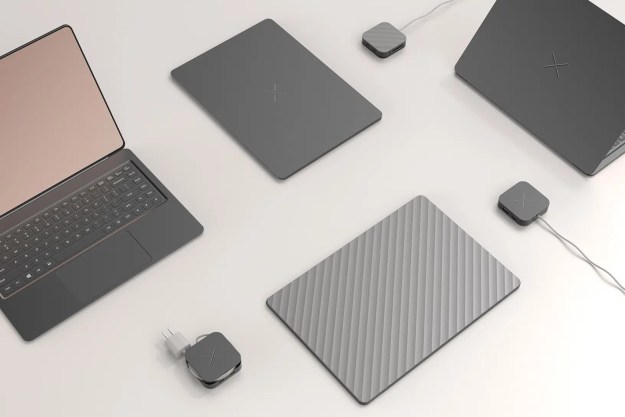
Of course, we do need to point out that this testing was conducted with an engineering sample, so may not be representative of final performance, but it seems likely that that will be the case.
The chip that Maintenance Bot at Overclock.net got a hold of was the Intel Broadwell-E Core i7-6850K, which they overclocked to 4.2GHz. It was paired up with an ASRock X99 Extreme3 motherboard, 16GB of Kingston DDR4 and a GTX 980Ti. This setup was able to achieve a score of 1,311 points in Cinebench R15’s multicore test.
In comparison, a last-generation Haswell-E Core i7-5820K running at the same clock speeds and using the same companion hardware, was only able to hit 1,191 points.
Maintenance Bot also ran SuperPi 32M, which also showed an improvement through the generations. The older Haswell-E chip achieved a time of eight minutes and 38.9 seconds, while its newer replacement was able to knock off a few seconds to record a time of eight minutes and 27.9 seconds.
Results from 3DMark Fire Strike also showed a modest improvement, with the Broadwell-E chip beating out the Haswell-E setup, 9,440 points to 9,353 points in Fire Strike Extreme testing.
Of course, there are many skeptics of these results, some stating that Cinebench always records larger differences between generations than other benchmarks and others calling for single-core testing to back up what we’ve seen here. The results do suggest that the generational jump in power may be larger than in previous years, though.
It is also worth pointing out that this improvement in performance comes with a die shrink to 14nm, which has allowed Intel to reduce the thickness of the CPU to just over 1.1 millimeters. In comparison, the Haswell-E counterpart is just over 1.8mm.
What we really want to see now, though, is how capable the new generation is at overclocking. If it is more energy efficient, perhaps we will see it taken to new heights and that is where the real performance gains may be bound.
Editors' Recommendations
- Intel CPU gaming crashes are causing an uproar
- Ryzen 7 7700X vs. Intel Core i7-12700K
- Intel Arc Alchemist may be a lot cheaper than we thought
- Intel Raptor Lake breaks the 6GHz barrier, and it’s not even the flagship
- Intel Raptor Lake could deliver a 60% performance upgrade, but there’s a catch



